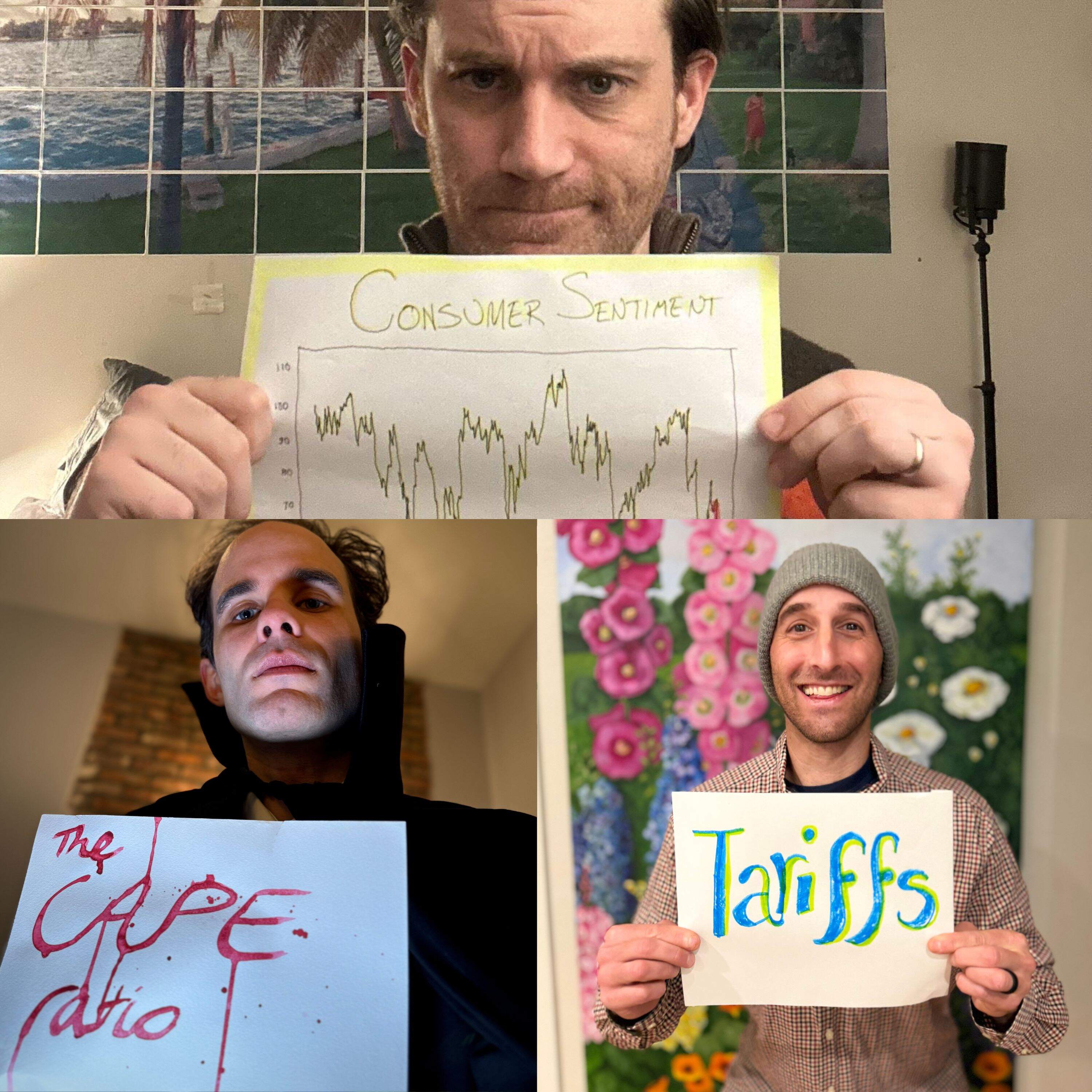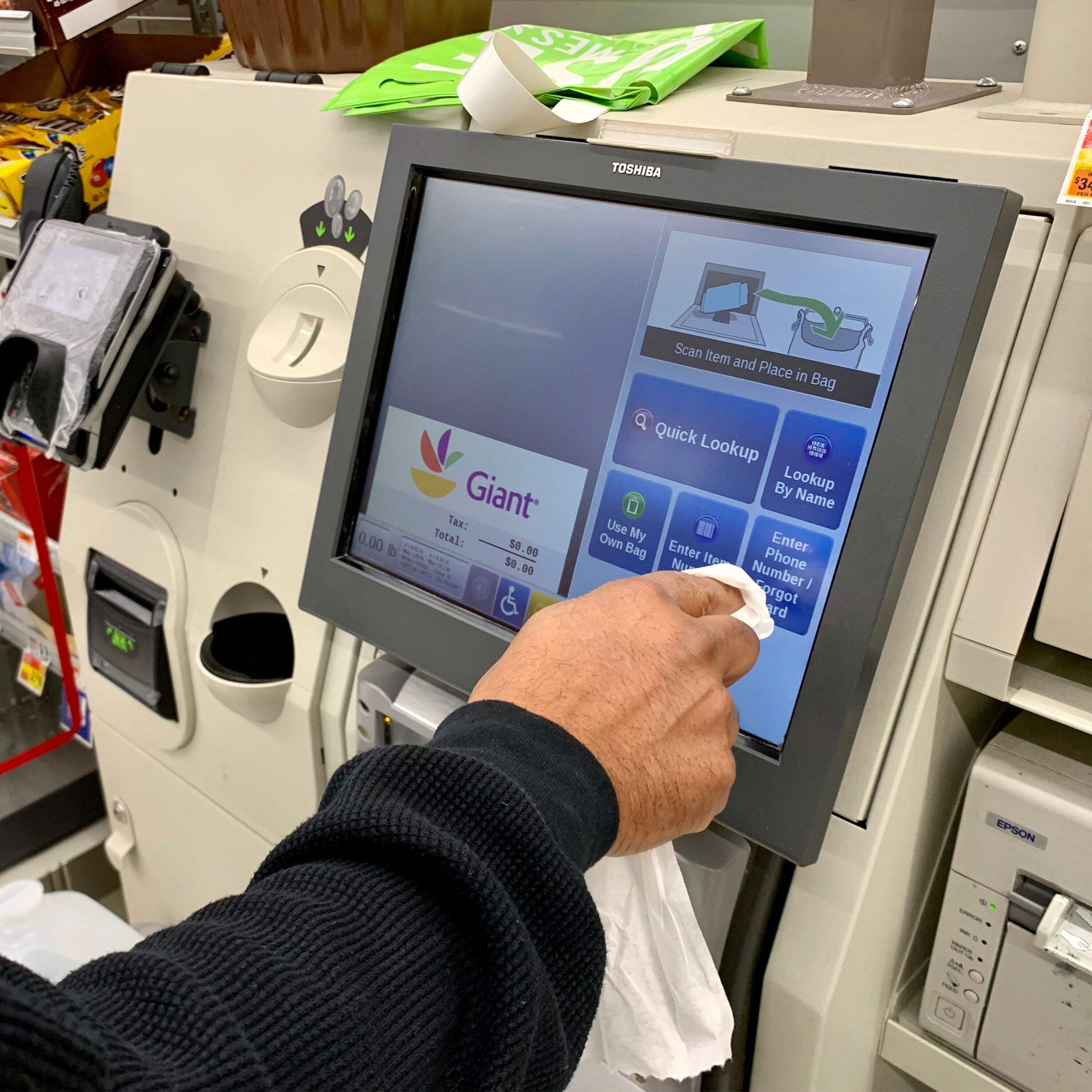How you're using AI at work
Related episodes:
Is AI overrated?
Is AI underrated?
For sponsor-free episodes of The Indicator from Planet Money, subscribe to Planet Money+ via Apple Podcasts or at plus.npr.org.
Fact-checking by Sierra Juarez. Music by Drop Electric. Find us: TikTok, Instagram, Facebook, Newsletter.
Learn more about sponsor message choices: podcastchoices.com/adchoices
NPR Privacy Policy
Press play and read along
Transcript
Speaker 1 NPR.
Speaker 1
This is the indicator from Planet Money. I'm Adrienne Ma.
And I'm Darren Woods. And it's Jobs Friday.
Speaker 1 It's that time each month where we check in on the latest jobs numbers and trends that are shaping the jobs market. So first with the numbers.
Speaker 1 The Bureau of Labor Statistics' latest report shows that that the unemployment rate ticked up to 4.2% last month, while the economy added just 73,000 jobs.
Speaker 1 That is less than analysts expected, though the biggest surprise from this report is that the BLS made a big downward revision to its previously reported job numbers.
Speaker 1 That's right. The BLS now says the economy added about a quarter million fewer jobs than they had previously reported.
Speaker 1 That downward revision wipes out most of the job gains reported in May May and June.
Speaker 1 And this relatively soft jobs report suggests the economy is feeling the effects from the Trump administration's tariffs and immigration policies.
Speaker 1 Now, zooming out from today's news, this Jobs Friday, we're focused on a trend that could also spell fewer jobs in the not-too-distant future, AI.
Speaker 1 We recently asked listeners, how are you using AI in your job? And after the break, we'll share some of those stories. Stories which ranged from the good to the bad to the ghoulish.
Speaker 1 Let's start with the good, the positive stories of AI at work, because you actually sent us a lot of them.
Speaker 1 Yeah, so a lot of listeners said they're using AI for tasks they used to do manually and it's helping them work more efficiently. Listener David Reshita from Fort Worth, Texas was one of them.
Speaker 1 It does the work of being able to analyze dozens of small companies that we work with. And the fact that we can do that every single week is amazing.
Speaker 1 Then there's Hannah Williams from Skinny Atlas, New York. She says AI has been really useful in research and writing.
Speaker 2 I view it more as a tool rather than, you know, like my replacement, because I like to add my own, you know, my own twist, my own input on it as well.
Speaker 1 And Ricardo Scott from Porto Alegre, Brazil, has found AI helpful in navigating office politics.
Speaker 3 A little while
Speaker 3 I asked Shaji PT to help me rephrase in a calmer and more professional tone to avoid making the situation worse.
Speaker 1 That sounds like a very helpful use of the technology. Yeah, who could not use this?
Speaker 1 So, you know, drafting more polite emails and blog posts and analyzing data, these are all positive stories we expected to hear about AI at work. But one story in particular stood out to us.
Speaker 1 It comes from a teacher in New Delhi, India named Misha Aurora, and she teaches economics to high schoolers.
Speaker 1 Yes, Misha says she's using generative AI tools to do things she couldn't imagine doing just a couple of years ago.
Speaker 4 Now I feel powerful. I feel
Speaker 4 I can be creative.
Speaker 1 Rather than being stuck teaching from the textbook, Misha says she can use AI to quickly create new learning materials to suit different students' learning styles.
Speaker 4 So for example, I can prompt it in a way to create a quiz which is for a particular student. And there's a student who understands artistically.
Speaker 4 So I can now create graphics out of a topic and hand it out to the student. There are some students who understand it on the basis of the audio skills.
Speaker 4 So I can use Google LM to create like a podcast of something and hand it out to another one.
Speaker 1 Just quietly, there is an economics podcast that we could recommend you that's already made.
Speaker 4 Then there's another student who would like maybe a song on it. So I can use Suno app to just create like a song and ask the student to analyze that.
Speaker 1 And these examples are not mere hypotheticals. For instance, Misha recently prompted an AI to create a song about monopolies without using the word monopoly.
Speaker 1 Then she played it for the students and had them guess what it was about.
Speaker 5 With whispers and lies, they manipulate the market.
Speaker 5 Leaving behind the dreams of the hopeful, endless startups.
Speaker 1 Very soulful.
Speaker 1 For a computer, I guess, yeah. I mean, maybe this is not going to be the song of summer, but you know, Misha says it takes a potentially dry econ lecture and makes it a little more fun.
Speaker 1 I respect that. And for another lesson plan, she told each of her students to use an app called Character AI to create a chatbot based on a famous economist and then have a conversation with it.
Speaker 1 Right, so they could ask John Maynard Keynes bot to explain the 2008 financial crisis.
Speaker 1 Yes, and Misha then had the students analyze the responses they got from their econ chat bots and discuss them in class.
Speaker 4 The peer discussion, that should not be taken away. To get them to think is, again, the job of a teacher, and you have to know when to bring in AI and what it should not be replacing.
Speaker 1
So those were the good parts about AI at work. Now, for the bad.
This story comes from Chris Greben.
Speaker 6 I'm a software engineer. I started a company, Board Cave, and I'm from Queensland, Australia.
Speaker 1 Chris's company, Board Cave, is an online marketplace for what else on the coast of Australia? Surf gear. And Chris, as a software engineer, says his job basically has two parts.
Speaker 1 One part requires him to think like a digital architect, to make decisions about the best way to structure a website or a piece of software. That's the part he likes.
Speaker 1 The other part of the job is basically writing lines and lines and lines of code. And this, Chris says, is the boring part of the job.
Speaker 1 But now, with apps like ChatGPT and Claude, he says they can do a lot of that coding work for him.
Speaker 6 Things that would take my brain a lot longer, it was doing it really quickly. And then I would just check over it and copy, paste, copy, paste, do a few things.
Speaker 1 Chris says he's a lot more productive nowadays, which is great. But then a month or so ago, he had a slightly disturbing realization.
Speaker 1 AI programs he uses to help him write code have gotten to the point where they can exercise the sort of higher level thinking he thought was his domain.
Speaker 6 Reading the code, understanding to a deep level how everything connects, and then write the exact bit of code that needed to write to fit into that flow.
Speaker 1 If AI can make design decisions on its own, can solve problems and write code, what exactly is left for Chris to do?
Speaker 1 This is why Chris says, it feels like just a matter of time before traditional software engineering jobs like his become obsolete.
Speaker 1 Although he says until that day, it feels like there is a window of opportunity for people like himself.
Speaker 6 And so right now, if you are a programmer or a developer, there's an opportunity for you to use your skills to be 10, 20, 30 times more effective.
Speaker 1 But that window, he believes, won't stay open for that long, maybe a year or two. And in the meantime, Chris says he's trying to make hay while the sun shines or surf while the waves are good.
Speaker 1
So we've covered the good and the bad of AI at work. Now for a story about the ugly.
And this one comes to us from Kristen Tomkowid.
Speaker 7 I'm a wedding and portrait photographer based in the Hudson Valley of New York.
Speaker 1 As a photographer, she uses Photoshop to edit her photos. And a couple of years ago, the company that makes Photoshop, Adobe, started adding new generative AI abilities to the software.
Speaker 7 So the AI features are something you turn on as you need them.
Speaker 1 And these tools allow Kristen to, for example, select a stray exit sign or somebody in the background of a photo and really easily remove them.
Speaker 1 Kristen says it's a pretty cool feature, though as she told our producer Ella, it doesn't always work the way she wants it to.
Speaker 7 The one instance that I could really think of where it did turn weird was I had a bride that had a bridesmaid that she didn't really want in the wedding party and she wanted her out of the photos.
Speaker 8 Oh, that's crazy.
Speaker 8 Wow. And did you use AI to edit her out?
Speaker 7 I tried, but then I got the weird ghoul people.
Speaker 1 The weird ghoul people. I think anybody who's seen AI photos knows roughly what we're talking about here.
Speaker 1 Yeah, instead of disappearing the offending bridesmaid, Photoshop inserted a new scary humanoid figure that kind of looks like the lady from the screen painting.
Speaker 1 So in the end, Kristen just left the photo as it was. Okay, well, I guess Kristen's job won't be replaced by AI just yet.
Speaker 1 There you go. The good, the bad, and the ghoulish of AI at work.
Speaker 1 If you're interested in hearing more of these stories, check out Planet Money's newsletter. And if you've got a story about the good, the bad, or the ugly of AI, hit us up at indicator at npr.org.
Speaker 1 This episode was produced by Corey Bridges and Ella Feldman. It was engineered by Neil Rauch, fact-checked by Sierra Juarez, Keikin Canada is our editor, and the indicator is production of NPR.





